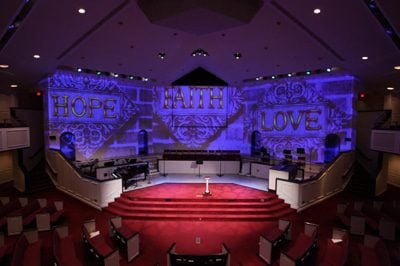Zambia: AVL With a Global Reach

SITUATION: Logistics, local gear, and the need to make the most of what is available
One of the most memorable experiences in my tech career took place in Zambia with Tommy Walker and his team. Tommy has an unquenchable passion for the lost in the developing world and has focused on reaching and connecting with people wherever he is given the opportunity to minister. Zambia, despite its difficult colonial past, has developed into a beacon for the gospel within Africa. So, with throngs of Christ-followers ready to help, Tommy set out to record a live DVD in the city of Lusaka. However, we soon found out personnel logistics is one thing; gear logistics is quite another. The world is equipped to move people anywhere on earth, their gear, not so much. In the end, the DVD was a success but only by overcoming some serious challenges along the way.
SOLUTION: Simplify again and again to reach a minimum acceptable level
Congregations in remote areas of the world are content to use the available technology, but they learn to master it fully. Just as embargo-affected Cubans have kept 1950s cars running for decades with no replacement parts, so, too, media techs in Guatemala, Cambodia, and Estonia have been able to keep antiquated mixers, mics, and cameras functional with no outside support. It is a testimony to their ingenuity and should cause those of us in the States to reexamine our definition of a “need.” Additionally, given the perils of travel, gear can be broken and should be considered expendable. For a first-world team looking to serve on a short-term excursion, the key question members must ask themselves is, “What is the absolute minimum amount of gear I need to perform my function?” As a gesture of gratitude, many visiting worship teams leave all the equipment they bring with the host churches. Since international flights have strict rules regarding baggage weight limits, the corollary of lighter weight applies as well. Clearly then, this situation precludes bringing amplifiers of any type, multiples of any instrument, and any item considered irreplaceable, such as a ’59 Les Paul Rosie.
ACTION: Know the environment
Just as customs vary around the world, tech norms are different as well. It is often noted, British sound techs are among the world’s elite due primarily to their calm attitudes during the chaos of sound check. I found out, though, this aplomb does require the tea cart come off the truck first, be plugged in, and tea served before any other gear can be off-loaded. For a Type-A American with a detailed timeline in-hand, this process can be difficult to comprehend, but it is the local custom and should be honored.
Safety, though, must be held to a rigid line of acceptability regardless of the locale. For instance, in Abidjan, Ivory Coast, I had to accompany the equipment owner to the one store in the country where safe hoisting gear could be found and insist it be purchased and used in place of the dangerous rigging they had attached to 1,500 pounds of line array. Even so, I could not stop the rigger from climbing the support structure barefoot with no safety harness. Prayer goes a long way in these situations.
Incoming AC power is not stable or entirely safe in many areas of the world. In Myanmar, their music festivals are accompanied by high-pressure water hoses drenching the revelers in close proximity to power lines running from nearby generators. Isolation transformers can help in these environments and should be part of the system. For on-stage talent, the best idea is to not touch the mic or use wireless instead. For less dangerous situations where there is the possibility of hum, Ebtech’s Hum-X devices are quite useful. Given the diversity of connectors and voltages, it makes sense to take a high-quality international kit in a carry-on bag.
Kent Morris delivers a bridge-building perspective to the technical arena. He is a live sound engineer for Paul Baloche, Tommy Walker, Kim Hill, and Israel Houghton and served as a senior pastor for a decade. He spent a dozen years in MI retail and wholesale. Currently, he is an audio/video system designer with Cornerstone Media, whose clients include Mt. Paran Church of God and In Touch Ministries.
What's Your Reaction?
Kent Morris is a 40-year veteran of the AVL arena driven by passion for excellence tempered by the knowledge digital is a temporary state.





